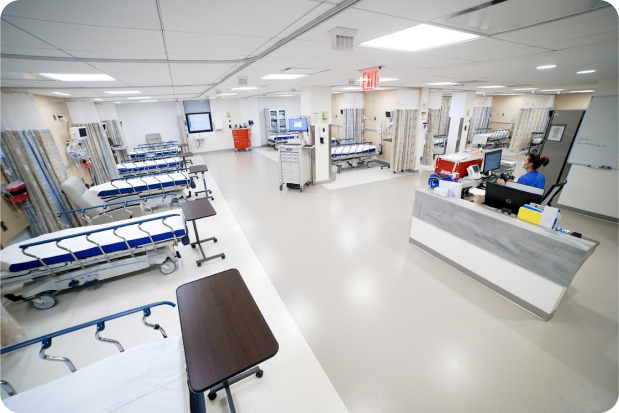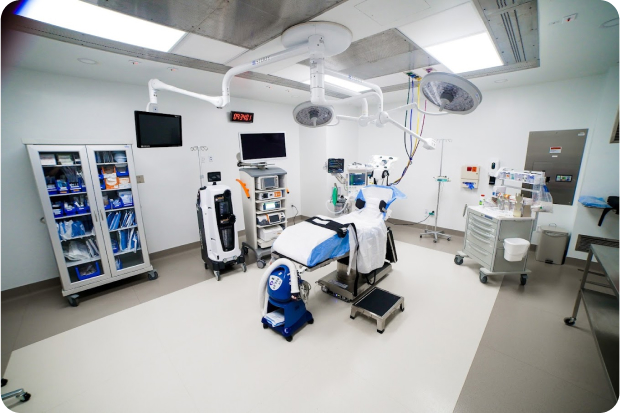 OUR LOCATIONSCall to book (212) 604-1300
OUR LOCATIONSCall to book (212) 604-1300
 OUR LOCATIONSCall to book (212) 604-1300
OUR LOCATIONSCall to book (212) 604-1300
Over 40% of Americans experience sciatica nerve pain, which reduces the quality of life. Sciatica, which is characterized by hip and lower back pain, makes simple activities including walking, sleeping, and sitting, virtually impossible. People who recently began experiencing sciatic nerve pain or whose discomfort isn’t severe might consider conservative therapies for immediate pain relief.
So what are the best ways to get immediate pain relief from lumbar? The tension can be reduced by concentrating on these muscles with targeted stretches and continuous, firm pressure. This excruciating condition can be permanently resolved by releasing muscle tension and correcting the alignment of your body. However, you should consult a doctor if you’ve had sciatica for a few weeks or experience incapacitating leg and low back pain. And if you decided to look for a “sciatica doctor near me”, choose your doctor accurately and pay attention to their experience, knowledge, and rate of successful treatment cases.
Anyone who has ever had sciatica, or discomfort in the sciatic nerve, understands how unpleasant and incapacitating it can be. It’s difficult to live with the pain every day while waiting for sciatica relief and undergoing numerous treatments.
If you’re experiencing these symptoms, there are several techniques to relieve sciatica pain instantly while receiving treatment for your back pain. To prevent making any underlying problems worse, you should utilize any of the following solutions with your doctor’s knowledge and approval.
Temperature-based alternating therapy can ease sciatic pain both immediately and temporarily. While warmth from a heating pad can promote blood flow to the affected area to speed healing, ice packs can aid to lessen inflammation. This can be incredibly beneficial if you are having pain and a muscle spasm at the same time.
Heat should be applied for 15 minutes every 2 to 3 hours, followed by 15 minutes of ice therapy once an hour to the sore area. To protect your skin from heat and ice, it’s essential to utilize a barrier like a towel at all times. Never sleep with the hot or cold compress on.
Pain can be quickly and effectively relieved by applying topical gels, creams, or patches containing analgesics and pain relievers. These medications work locally by penetrating your tissues. They are less likely to have negative side effects, avoiding persistent issues.
Over-the-counter treatments containing the following ingredients are frequently included in topical pain medications:
Multiple medications may be used together in some formulations. Take note that you should avoid applying an ice pack or heat patch to the region while using topical medicine. Combining the two treatments may lessen or change how topical painkillers work.
Even while it can seem difficult to focus on posture when you’re in pain, it’s more crucial than ever. Long periods of time spent in one posture may cause your pain to worsen. Every 20 minutes or so, try to switch up your posture and concentrate on correct form. Your spine may be relieved of pressure, which lessens sciatica symptoms.
Your lower back can feel less strained if you perform stretching and strengthening exercises. Additionally, exercise helps the nervous system work better, encourages the recovery of soft tissues, and may lessen pain sensitivity. Exercises for sciatica can assist to strengthen the lower spine, the legs, and the abdomen while also relieving strain on the sciatic nerve roots.
Before exercising, heat treatment helps warm up the muscles and reduce stiffness. After the workout, you can use a cold compress to soothe any discomfort or soreness. If you experience recurring sciatica symptoms, you can perform easy stretches at home or at work. Always exercise within your comfort zone and begin with 2 to 3 repetitions before gradually increasing to more.
Stretch out gently each day as part of your regimen. Stretching is a fantastic approach to increase your range of motion and spinal flexibility while also strengthening your core and back. Additionally, the majority of stretches are easy enough to perform while enjoying other activities, such as watching a movie or listening to music.

Any back discomfort should be taken seriously, and you should consult an orthopedic doctor for an examination to rule out any significant issues. While waiting for your consultation, you can try using the previously discussed approaches to manage your symptoms. However, you shouldn’t ignore the symptoms for too long because this may lead to a worsening condition. In rare instances, sciatica that is left untreated might permanently damage the nerves.
Immediately seek sciatica pain treatment if you suffer from any of the following symptoms and have not yet seen a pain specialist:
Acute sciatica is usually characterized by mild symptoms that last for only 4 to 8 weeks, and professional medical intervention is rarely required. The diagnosis might go more quickly with a comprehensive medical history. The patient will also be instructed by the doctor to perform simple exercises that stretch the sciatic nerve. Sciatica is normally detected through a shooting pain down the leg while executing these activities.
X-rays and other imaging tests may reveal herniated disks and bone spurs in many people who don’t exhibit symptoms. As a result, unless your discomfort is severe or doesn’t go away within a few weeks, doctors rarely request these tests. If your symptoms persist, the following imaging tests may be requested by a pain specialist.
Sciatica should be treated as soon as possible to prevent the symptoms from getting worse. There are both nonsurgical and surgical approaches to treating sciatica. Nonsurgical techniques are typically used first. Surgical intervention may be needed in cases of severe underlying causes or progressive neurological disorders, such as leg weakness.
First-line sciatica treatments often combine pain medication, physical therapy, therapeutic injections, and complementary therapies. In most cases, nonsurgical treatment for acute pain from sciatica lasts 4 to 6 weeks. Depending on the underlying cause, treatment times for persistent sciatica that lasts longer than 8 weeks may be longer.
Physical therapy is an essential part of practically every sciatica pain treatment plan and combines stretching, strengthening, and aerobic conditioning. It’s also possible to incorporate therapeutic exercises into a physical therapy program.
The following are some of the objectives of physical therapy and exercises for sciatica:
Resting or modifying activities may be necessary in certain circumstances, but it is important to focus on maintaining as much activity as possible to prevent prolonged periods of inactivity. A physical therapist may prescribe particular workouts to address the underlying cause of sciatica.
Sciatica pain can be effectively treated with exercise and physical therapy under the guidance of skilled healthcare experts, like physiatrists, chiropractors, physical therapists, or certified athletic trainers.
The sciatica pain relief can be managed with both prescription and over-the-counter medications. The following are some examples of medications prescribed to alleviate sciatica pain:
These medications are typically administered to reduce discomfort and enable patients to engage in physical therapy. In order to prevent addiction, medications like opioid analgesics are typically prescribed for brief periods of time.
Therapeutic injections in the lower back may be used to address sciatic nerve conditions that cause back discomfort. To assist patients in participating in and benefitting from physical therapy, injections are used to provide sufficient pain relief. Additionally, injections can be utilized to determine the target nerves and pinpoint the origin of the pain. Sciatica pain relief can be achieved with the following types of injections.
Sciatica caused by disorders like spinal stenosis, disc herniation, or degenerative disc degeneration may be helped by epidural steroid injections. As the steroids dissipate through the nerve endings and other tissues, their anti-inflammatory effects spread throughout the structures transmitting pain to the brain. Epidural steroid injection treatment is intended to accomplish the following:
Injections of selective nerve root blocks are delivered close to the spinal nerve as it reaches the intervertebral foramen, the bony space between the adjacent vertebrae. The medication minimizes inflammation while also numbing the pain the nerve transmits. To manage sciatica pain, one or more nerve roots between L4 and S3 may receive selective nerve root blocks.
Results vary greatly for the majority of therapeutic injections. Some people may have pain relief that is both instant and long-lasting, some may only have pain relief that lasts a few weeks or months, and some people may not have any pain relief at all.
Numerous studies have examined the effectiveness of chiropractic care, acupuncture, and massage therapy for treating sciatic nerve pain. Remember that the sciatic nerve or nearby nerves can become compressed along the spine, inside the pelvis, or between the piriformis muscle and other structures, resulting in sciatica. By using the following alternative therapies, you can increase space and alignment in these areas of your body.
For approximately 5% to 10% of individuals with sciatica, surgery is the final option if all other treatments fail. When leg pain or weakness persists or gets worse despite trying numerous non-surgical sciatica treatment options, surgery for sciatica is typically considered. Surgery would likely need to be discussed between you and your doctor if you have mild sciatica symptoms but are still in pain after 3 months of stretching, resting, and medication.
Surgery may be the first course of action in a few circumstances. For instance, cauda equina syndrome, a disorder that causes you to lose control of your bowels and bladder, can very rarely be brought on by sciatica. This condition calls for immediate surgery.
At New York Pain Care, we strive to help patients get back to living pain-free as quickly as possible. Our highly-skilled team of medical professionals specializes in non-surgical procedures to reduce back pain and build the muscles supporting the spine.
Our state-of-the-art facilities are designed to provide patients with the highest level of comfort and safety. To receive a proper diagnosis of your condition, consult with one of our NYC pain specialists today. Discover more about our services and schedule an appointment with one of the country’s leading spine doctors on our website.






